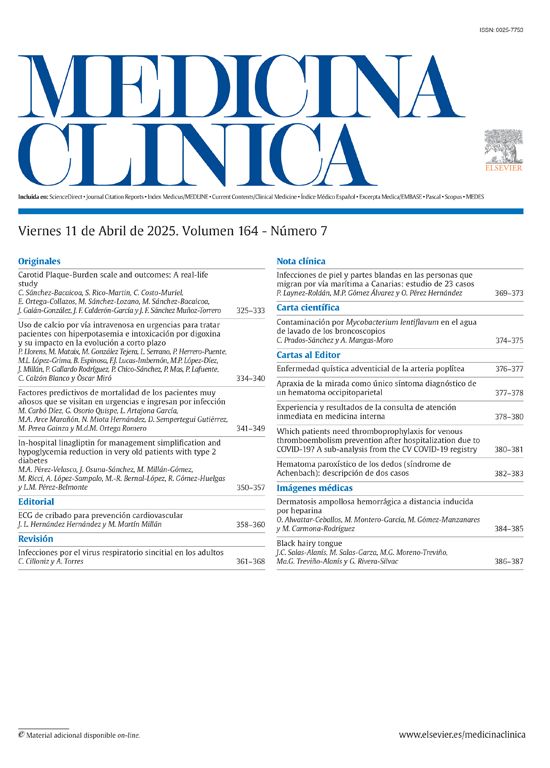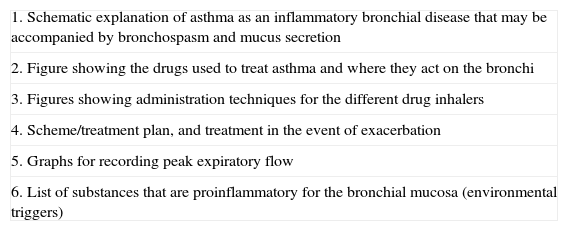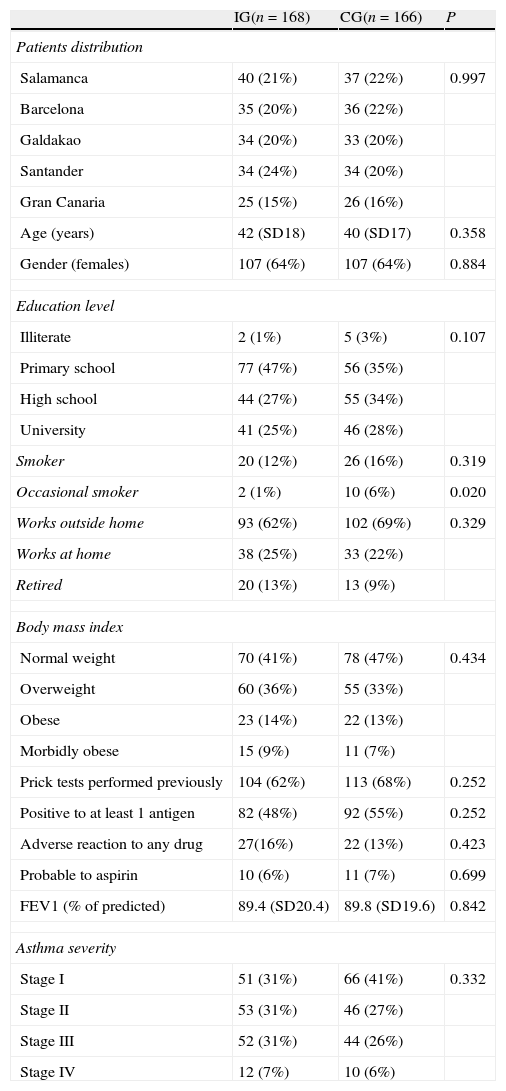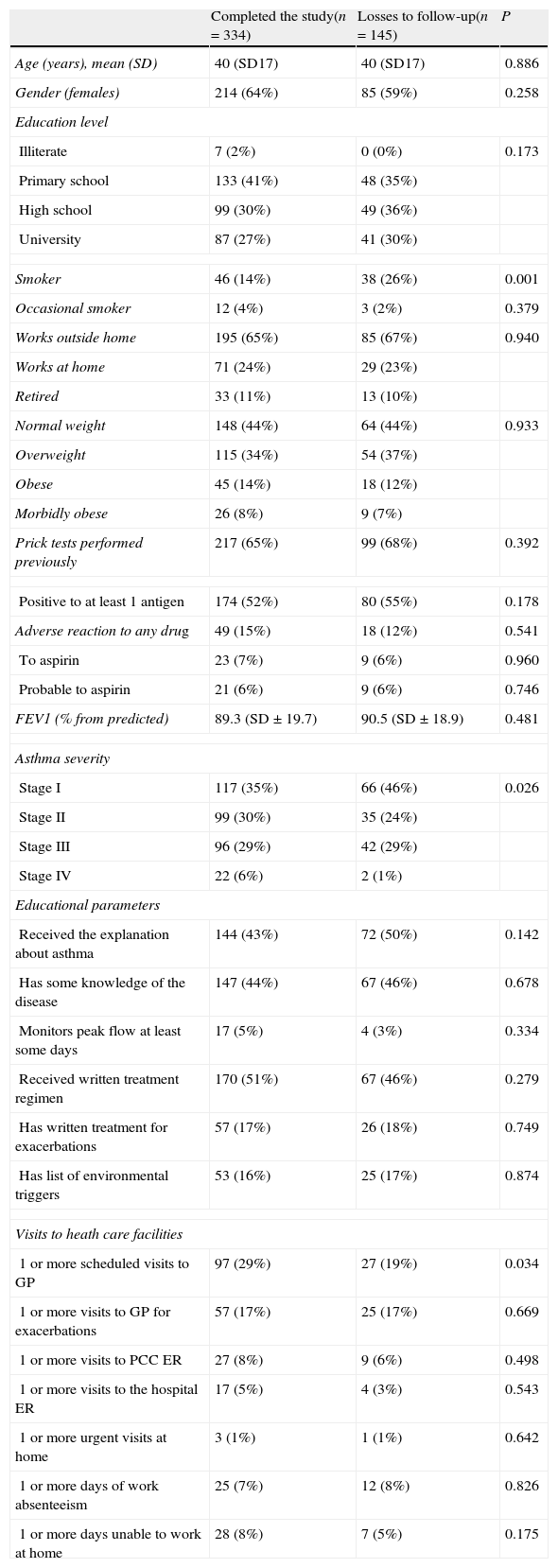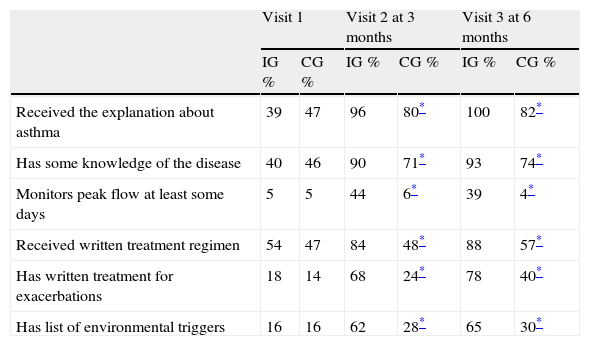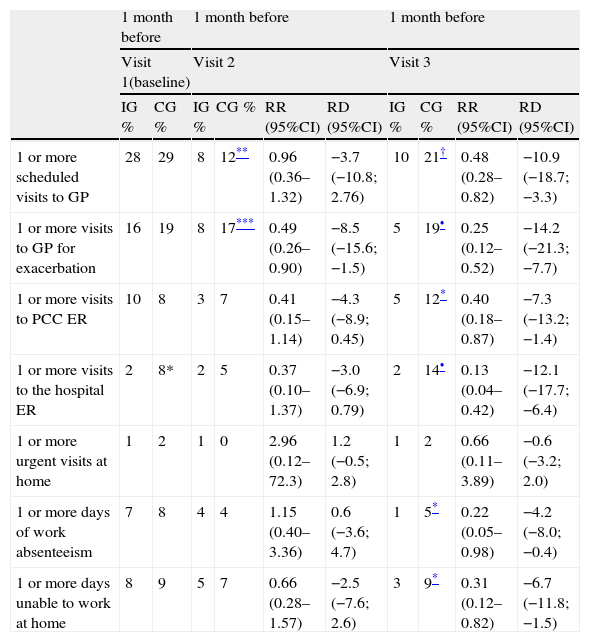Asthma control is suboptimal. The objective of this study was to reduce health care requirements and work absenteeism.
Material and methodsMulticenter randomized controlled study investigating asthma control, educational parameters, health service use, and absenteeism. After adjusting treatment according to GINA recommendations, control group patients (CG) followed their physician's recommendations, while intervention group (IG) patients additionally underwent a 5-minute educational intervention. This protocol was repeated at 3 months, and a final assessment was carried out at 6 months.
Results479 patients (mean age 40 (SD 17) years) were recruited from primary care, and 334 completed the study. Comparatively, IG patients showed an improvement at the 3- and 6-month evaluations in the six educational parameters (P<0.001) and required fewer urgent visits to the GP for exacerbations [RR=0.49 (95% CI 0.26–0.90); P<0.04], and before the third evaluation, also in urgent GP visits [RR=0.25 (95% CI 0.12–0.52); P<0.001]. Before this third evaluation, IG had fewer scheduled visits to the GP [RR=0.48 (95% CI 0.28–0.82); P<0.003], and fewer visits to the primary care [RR=0.40 (95% CI 0.18–0.87); P<0.05], and to hospital emergency rooms [RR=0.13 (95% CI 0.04–0.42); P<0.001]. In addition, before the third evaluation, IG patients were less often absent from work [RR=0.22 (95% CI 0.05–0.98); P<0.03] or unable to work at home [RR=0.31 (95% CI 0.12–0.82); P<0.02].
ConclusionsTwo short educational interventions improved asthma education and decreased the use of health resources and work absenteeism.
El control del asma es sub óptimo. El objetivo del presente estudio fue reducir el consumo de recursos sanitarios y el absentismo laboral.
Material y métodosEstudio multicéntrico randomizado que estudia el control del asma, parámetros educacionales, utilización del sistema sanitario y absentismo laboral. Después de ajustar el tratamiento de acuerdo con las recomendaciones de la GINA, el grupo control (GC) realizó las recomendaciones indicadas por su facultativo mientras que el grupo intervención (GI) fue sometido a una intervención educacional de 5 minutos. Este protocolo fue repetido a los 3 meses y nuevamente a los 6 meses en una intervención final.
Resultados479 pacientes (edad media 40 (DE 17) años) reclutados de atención primaria (AP), completaron el estudio 334. Comparativamente el GI mostró una mejoría a los 3 y a los 6 meses en los seis parámetros educacionales (p<0,001); antes de los tres meses requirieron menos visitas urgentes al médico de AP en relación a exacerbaciones [RR=0,49 (95% IC 0.26-0.90, p<0.04]. Antes de los 6 meses también requirieron menos visitas urgentes al médico de AP [RR=0.25 (95% CI 0.12-0.52); P<0.001] y también menos visitas programadas a este médico de AP [RR=0.49 (95% CI 0.26-0.90); p<0.04], así como menos visitas en urgencias del centro de atención primaria [RR=0.40 (95% CI 0.18-0.87); P<0.05 y a urgencias hospitalarias [RR=0.13 (95% CI 0.04-0.42); P<0.001]. Además el GI mostró una menor tasa de absentismo laboral [RR=0.22 (95% CI 0.05-0.98); P<0.03] o incapacidad para trabajar en casa [RR=0.31 (95% CI 0.12-0.82); P<0.02].
ConclusionesDos escuetas intervenciones educacionales mejoran la educación sobre el asma y disminuyen la utilización de recursos sanitarios y el absentismo laboral.




